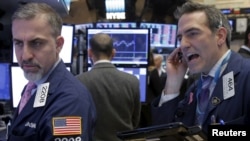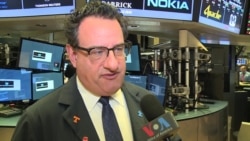Friday closed out the best week for the S&P 500 since November, with the index gaining 2.8 percent as crude oil and banks regained some losses.
The rise led traders to wonder whether stocks are bouncing back from their dip at the start of the year, or whether low oil prices and weak global demand will continue to drag down the markets.
“I think there is more volatility in these markets, and what you may see is choppy trade with 200- to 300-point swings in the Dow and 40 in the S&P 500 going forward, for at least the next few months, mostly because of the instability in oil supply and demand fundamentals,” said Peter Costa, governor with the New York Stock Exchange and president of Empire Executions. “Once that stabilizes, the market will follow.”
WATCH: Related video report of interview with Peter Costa
So far this year, the S&P 500 is down by more than 6 percent. The energy and financial sectors are down 74.5 percent and 17.6 percent, respectively, according to S&P Global Market Intelligence.
“For a confirmation of a rally, we need to see the financial sector participate,” Costa said. “You have to remember that the market rallied for 6.5 years, and from a technical trading perspective, this pullback is what we needed to wash out some of the bad seeds and reinvest in the good ones.”
Trading week ahead
Investors are focused on consumer spending next week as heavyweights Home Depot, Macy’s, Lowe’s and Target release financial reports. In addition, the Consumer Confidence report will be released Tuesday, a key piece of data that influences the stock and bond market because spending drives nearly two-thirds of the economy.
“Consumer discretionary [spending] will be a key sector to watch as the fourth-quarter earnings season winds down, since it is once again among the leaders, currently pegged at 11.0 percent earnings growth and second only to the telecommunications sector that is tracking at 19.9 percent,” Lindsey Bell, senior analyst at S&P Global Market Intelligence, said in a research report.
American retailing giant Wal-Mart reported earnings below estimates and lowered its full-year sales guidance, reflecting what some see as part of the ongoing shift to online shopping and growing competition from Amazon.com, which keep shoppers at home, away from stores.
“Amazon is certainly an ongoing pressure. The fact of the matter is e-commerce initiatives are costing money at this point for big-box retailers. Wal-Mart online sales were disappointing,” said Rob Campagnino, consumer sector strategist for SSR.
Outside the consumer sector, traders have several key pieces of data to contend with in the week ahead. Most important is the gross domestic product report on Friday morning, which is the all-inclusive measure of economic activity. This will also be watched by the Federal Reserve as it uses key data points such as this to help determine monetary policy, the most influential factor in the marketplace.









